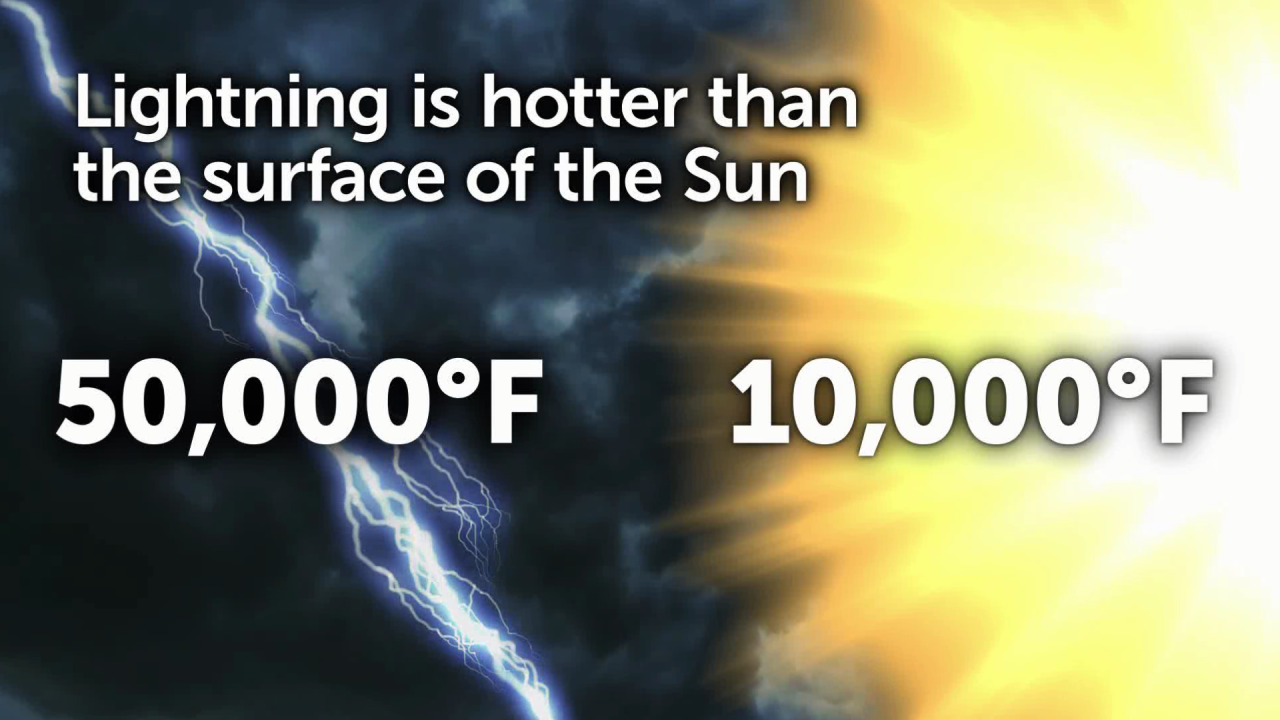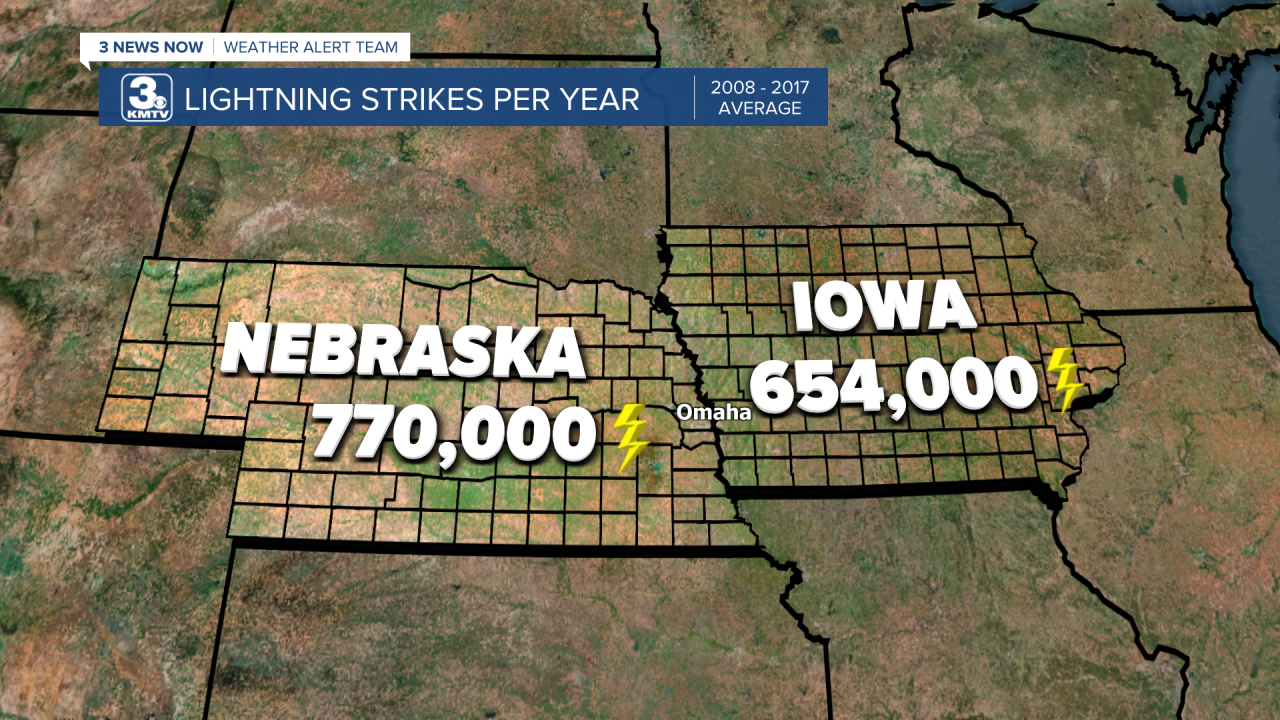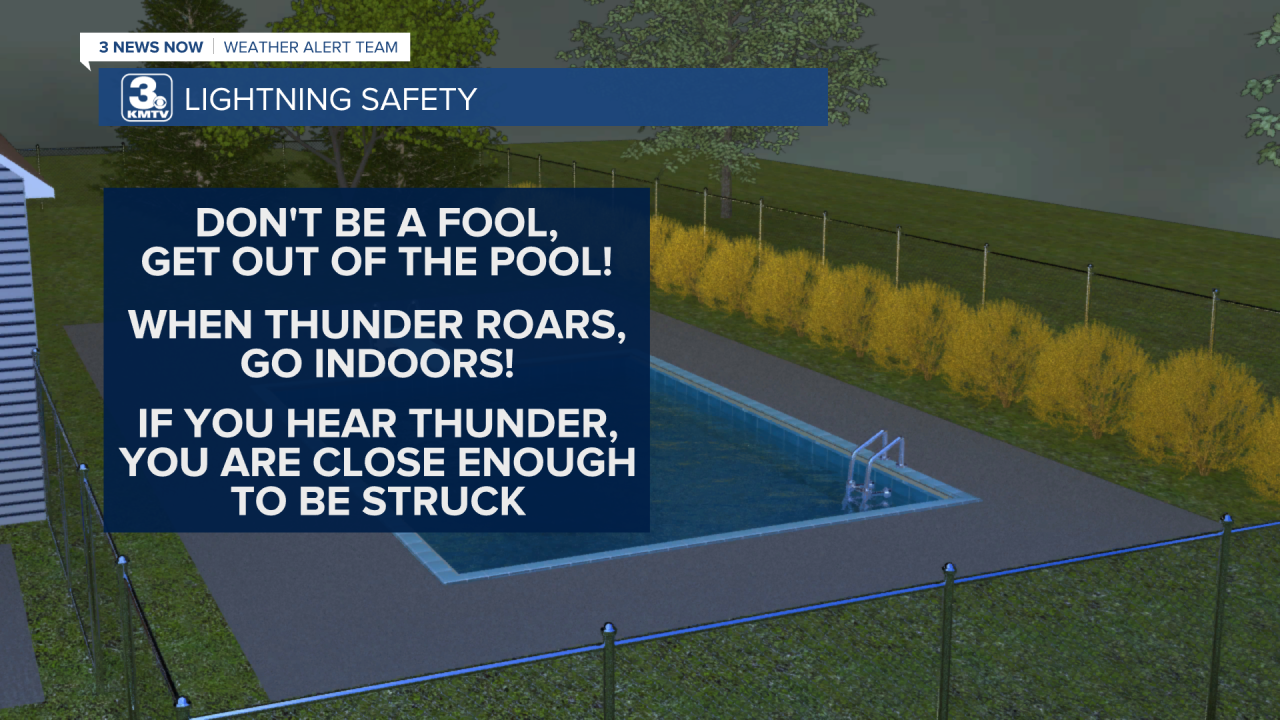March 25-29 is Severe Weather Awareness Week for Nebraska and Iowa. Each day, a different aspect of severe weather will be highlighted, explaining the science behind them, and how you can stay safe when severe weather threatens. This article will focus on lightning and lightning safety.
HOW LIGHTNING FORMS
A key component to any thunderstorm is lightning, it's what makes a thunderstorm a thunderstorm. Lightning is the release of static electricity built up within a thunderstorm. On a dry day when you touch something metal and you feel that small shock, that is the same principle as lightning, just on a much smaller scale. During a thunderstorm positive and negative charges build up within the cloud and at the ground. When these charges become too much there is a big discharge of electricity, lightning.

This can happen within the cloud, called cloud-to-cloud lightning; and it can happen with the ground, called cloud-to-ground lightning.
Calling lightning hot is an understatement, it is one of the hottest things on the planet, if not the universe. Lightning bolts can reach up to 50,000 degrees Fahrenheit! For reference, the surface of the sun is around 10,000 degrees. Despite its look, the actual width of lightning is about the size of your pinky finger.

Heating the atmosphere to 50,000 degrees instantly causes the surrounding air to explode, and that sound of the rapid heating expands miles outside the original lightning bolt. This is thunder! A good rule of thumb to see how close lightning is is to count the seconds between the flash of lightning and the boom of the thunder, every 5 seconds is 1 mile away. Thunder can be heard up to 25 miles away from a storm, while on some days you can see lightning in storms upward of 100 miles away!
On average in the United States, there are an estimated 22 million lightning strikes in thunderstorms. In Nebraska and Iowa, that number is 770,000 and 654,000 respectively. That is a lot of lightning strikes!

LIGHTNING SAFETY
The number 1 safety tip for lightning is to go inside. When thunder roars, go indoors. Even when it is not raining, if you hear thunder it is time to head inside. Lightning can strike upwards of 10 miles away from a thunderstorm, known as a "bolt from the blue". Do NOT hide under a tree, as lightning seeks the tallest object, which are normally trees.

Once you are inside, keep away from any corded electronics or metal pipes as lightning can travel through them. Avoid showering or washing dishes, as water is a good conductor of lightning as well. Although it is rare, homes can be struck by lightning.

If you are outside during a lightning storm, there is a chance you could be struck. The odds of being struck by lightning are low, around 1 in 1.2 million, however you should still take storms seriously! Warning signs if you are about to be struck include your hair standing up on the end, a tingling sensation in your body, and crackling power lines. Any warning sign that is shown means you have seconds to react. Lie flat down and spread yourself out like a starfish in hopes that the current will move around you.
If you are in a car and lightning strikes, stay in your car. Lightning will deflect around your car and go through the ground in the tires, you will be safe. Again, the best practice in any thunderstorm is to stay inside.




